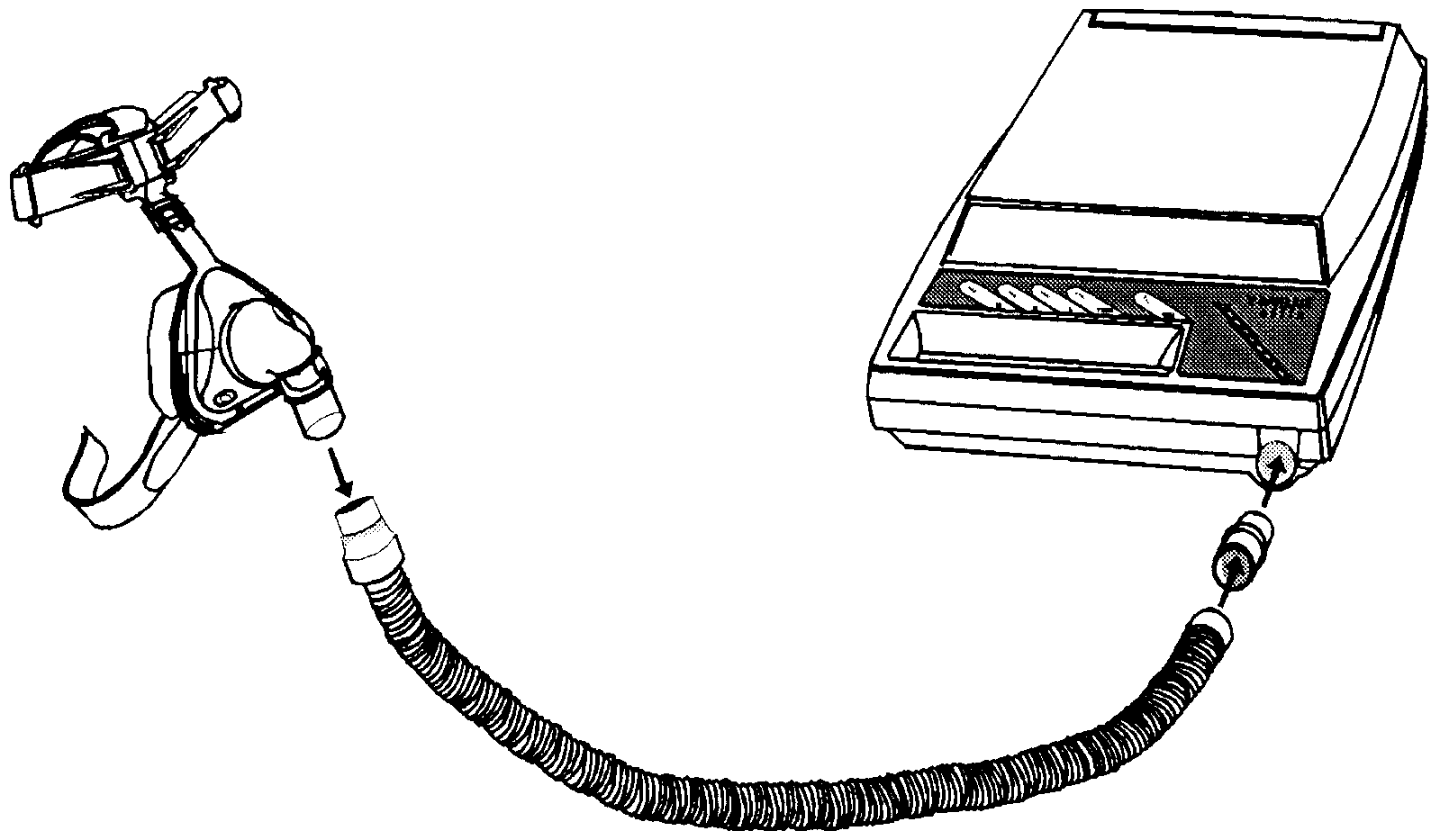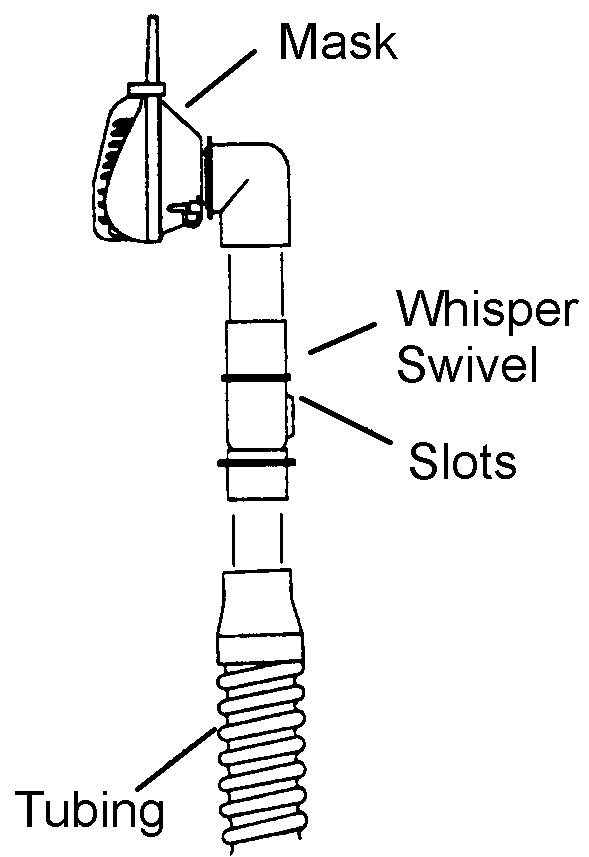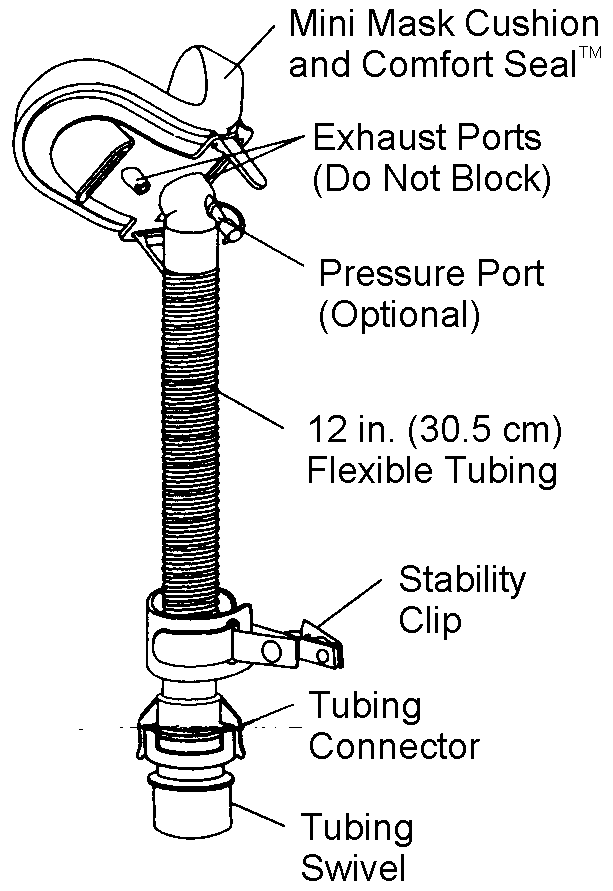
NIV Bi-level Compressor Operating Guidelines
Noninvasive ventilation devices are more commonly known as Bi-level compressors. The compressor is intended to assist your ventilation by supplying pressurized air through a mask. It senses your breathing efforts by monitoring airflow in the breathing circuit.
The cycling of two levels of positive pressure provides the breathing assistance. During inspiration, air flow at a slightly increased pressure helps to hold your airways open, push air past swollen or inflamed bronchial tubes, and takes some of the work off your breathing muscles. During exhalation, the pressure drops to make exhaling easier. Inspiratory positive airway pressure is also known as IPAP, whereas expiratory positive airway pressure is known as EPAP.

A flow sensor is built in to the device and insures that the Bi-level compressor will respond nearly instantaneously to your breathing. IPAP is triggered when the compressor senses that you are taking a breath, and then drops to EPAP levels as you exhale. The diagram below illustrates how IPAP and EPAP are triggered. If you donít initiate a breath in a predetermined amount of time the unit will cycle into IPAP and deliver a breath to you. This is known as the back-up BPM (breath per minute) rate.
Your physician will prescribe the backup BPM rate and the IPAP and EPAP pressure levels, or a range of pressure levels that can be adjusted until NIV begins to work for you. If your doctor has prescribed oxygen, it can be bled directly into the breathing circuit without effecting the compressorís ability to sense your breathing. Your therapist will adjust the levels for you. You should never try to adjust them yourself before talking to the therapist who is caring for you.
Setting Up Your Bi-level Compressor
1. Connect one end of the tubing to the airflow outlet port on the front of the unit.

 2. Connect the other end of the tubing to the swivel adaptor (if applicable to your mask set-up Ė some masks come with an exhalation port or swivel adapter built in).
2. Connect the other end of the tubing to the swivel adaptor (if applicable to your mask set-up Ė some masks come with an exhalation port or swivel adapter built in).
Note: The therapist presets the pressure levels that have been prescribed by your physician. You should never attempt to change the preset pressure levels on your own without first talking to your physician or therapist.
Fitting a Nasal Mask

Fitting an ADAM Circuit
Some people feel more comfortable wearing what are known as nasal prongs instead of a nasal mask. Your therapist will help you decide which is best for you. If you choose to use an ADAM circuit follow these directions:

1. Fit the headgear on your head as shown in Figure 1. Adjust the two velcro straps on the front of the headgear until a comfortable fit is achieved. Use of a mirror can make this process easier (Figure 1).
2. Slip the headgear from your head without releasing the Velcro straps. Select the largest size nasal pillow that is comfortable and seals your nose securely. Insert the nasal pillows into the shell located on the end of the circuit (Figure 2). Insert the pillows only as far as the first ring on the pillows.
Open the two loops on the top of the headgear and insert the ADAM circuit. (Figure 3) Thread the velcro straps back through the buckles on each loop, pressing down to secure in place. Leave the loops loose enough for final adjustment before pulling snug.
 3. Center the shell strap on the nasal shell velcro pad. Position the two nasal pillows in your nose, rotating as necessary for a good seal and comfortable fit. Place two of the velcro patches on each side of the headgear just in front of the ears. This may be adjusted later.
3. Center the shell strap on the nasal shell velcro pad. Position the two nasal pillows in your nose, rotating as necessary for a good seal and comfortable fit. Place two of the velcro patches on each side of the headgear just in front of the ears. This may be adjusted later.
Position the end of each strap over the velcro patches on the side of the headgear. Slide the circuit tubing back through the two loops on top of the headgear and retighten to hold the tubing snugly in place.
Fitting a Monarch Mask
 Another kind of mask is a monarch mini-mask. This is a nasal mask that covers only the opening of your nose, or nares. Your Therapist will help you decide which type of mask is best for you. If you decide to use the monarch mini-mask follow these directions:
Another kind of mask is a monarch mini-mask. This is a nasal mask that covers only the opening of your nose, or nares. Your Therapist will help you decide which type of mask is best for you. If you decide to use the monarch mini-mask follow these directions:
1. Before attaching the mask, put the headgear on by itself. The headgear is labeled to identify the left and right sides. While looking in a mirror, adjust the top and back straps so that your ears are centered in the earpieces. Gently pull forward on the side straps to make sure your ears stay centered in the earpieces. Remove the headgear and set it aside.
2. Connect the tubing from the NIV compressor to the swivel connector on the monarch mask. Note: You do not need to use any other kind of swivel connector with this mask. The swivel connector is built in. Position the mask under your nose. Make sure the comfort seal is not blocking your nostrils. Move the mask around until you have a good comfortable seal and attach the headgear.
Daily Operation of Your Bi-level Compressor